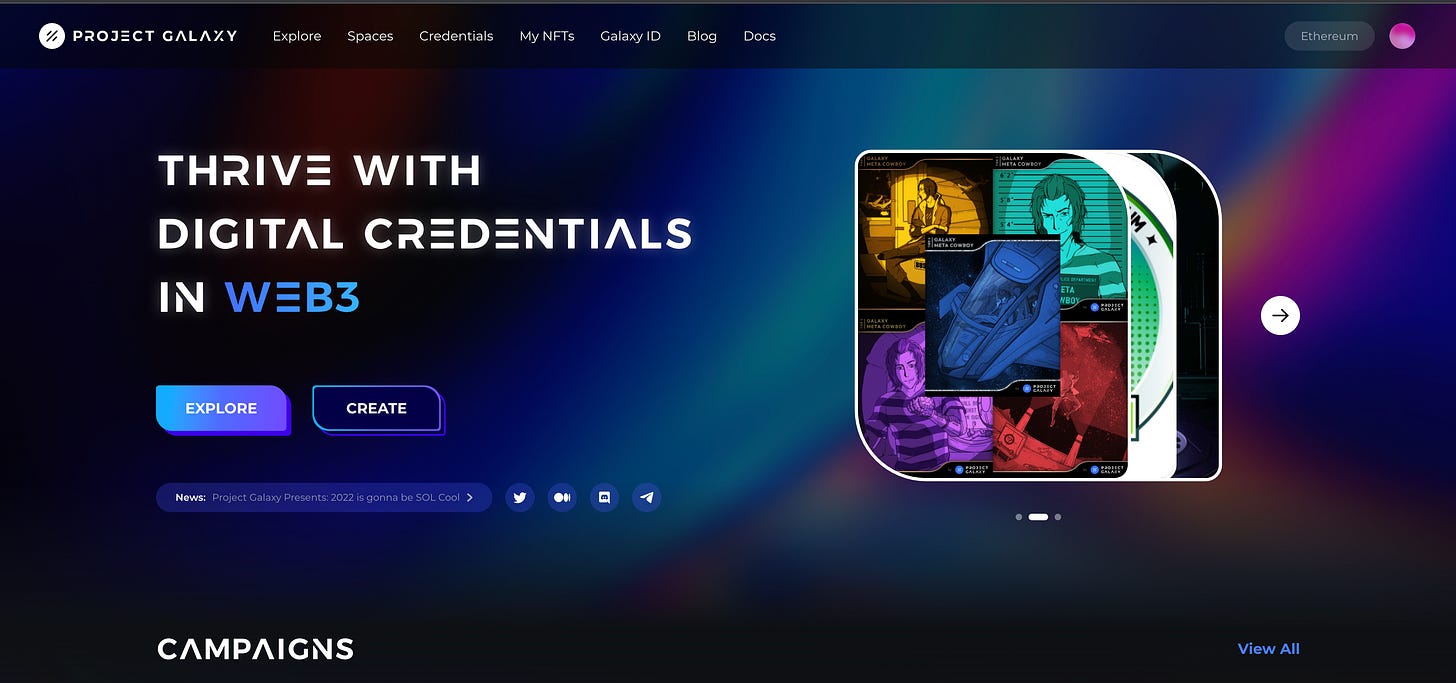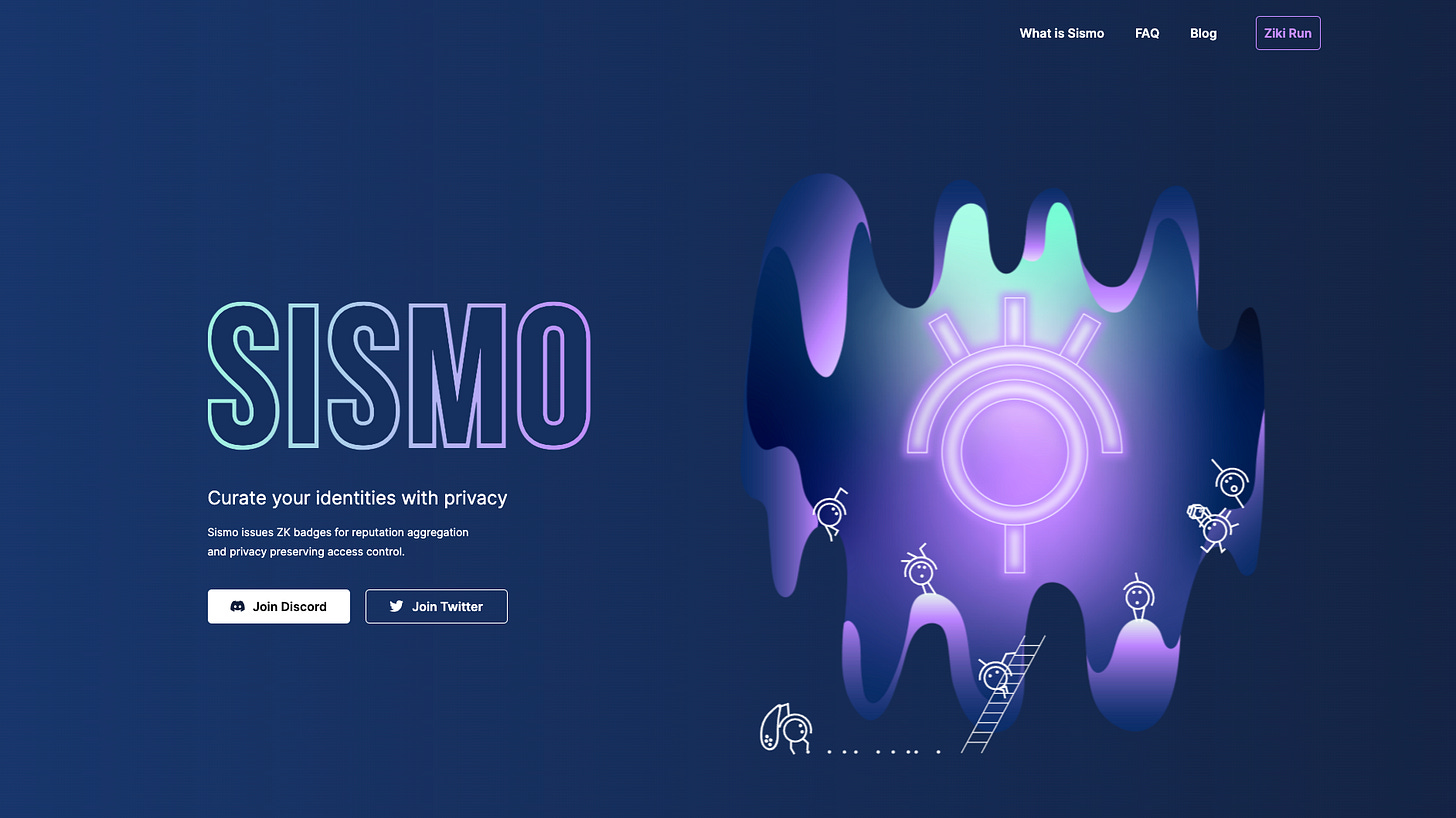Web3 Reputation Market Map
A deep dive into the various players in the space of digital reputation and identity in web3
Introduction
Reputation and identity are the next big frontiers of crypto that unlock a whole new class of use cases. However, these words conjure up many different products, services and ideas with too much hand waving. This article/piece is an attempt to start classifying the various digital reputation vectors that exist today and ultimately how they all play a pivotal role in defining who we are online.
These aren’t by any means definitive but rather a starting point and I’m more than welcome to ideas/comments/feedback on this framework! These aren’t perfect however I do hope they help capture the rough subjective nature of each of these vectors.
Social Reputation (Social Media)
This is the major category that exists today where user-generated content can be uploaded and then peers can appraise and create status systems within that particular ecosystem. Social reputation systems typically create social graphs with them and are subjective interpretations of value rather than objective (what people think of your work rather than the purpose of the work). There are two classic examples that fit the bill here:
Twitter: users can upload Tweets that contain text and other users can like, retweet and follow to create social graphs of perceived value. Having many followers and other highly-followed users as your followers creates perceived value of reputation since people think “if credible person X follows Y, then Y must be somewhat credible in the eyes of X.”
Github: developer can write code in repositories that are public. Being a major contributor in a repository that has many Github stars creates a form of status and reputation within developer circles. Your reputation as a developer is only as good as the repositories and organisations you’re associated with. ie: being a major core Bitcoin/Ethereum developer grants you a lot of reputation given the number of “stars” on the main repositories.
I’m sure there are many other social reputation mediums however they’re not as dominant in Web3.
Contribution Reputation (LinkedIn)
Unlike Social Reputation, Contribution Reputation is more objective and depends on the actual work you get done rather than what others think of your work. This is an emerging area that goes beyond just engineering in Web2 and tracks all contributions in Web3 given the transparent and loosely-coupled nature of DAOs. Once again, I think there are two strong contenders that play a role here:
Gitcoin: projects can create bounties/tasks for others to complete and users can earn tokens/stablecoins for completing said tasks. Contributions to tasks are tracked on-chain and help users build a reputation of contributing labour to complete tasks with defined goals. While this can draw similarities to Github it differs in the fact that this particular reputation vector is highly defined and narrow in scope ie: 0xabc finished a writing bounty for project X for Y amount of tokens.
Coordinape: many contributors in a DAO can assess each others’ work in an attempt to classify who has contributed the most and created the most value. Assuming that DAO members are assessing other members on the quality and effort of work spent rather than social clout, Coordinape is a strong tool to track contribution reputation within a localised context of a DAO.
Layer3.xyz: similar to Gitcoin but catered more towards DAO contributors and community members, users can earn bounties directly from DAOs for completing work done. These contributions are tracked both off-chain and on-chain. Ultimately over time, the best users have even more data points that they can be tracked by.
Data Solutions (AWS/GCP)
This is probably one of the more novel and exciting areas that we’re going to start seeing take off more in the next few years. The concept of self-sovereign data and storing it in a decentralised way is something that we’re still in the early innings for. There are two notable contenders working deeply in this space that I’d love to draw attention to:
Ceramic Network: the whole idea here is sort of like Amazon S3 but the database is verifiable on permissionless data networks and database operations are authenticated with private/public key pairs. Unlike IPFS you can update data but also have much more granularity around how data is changed/updated/stored. Disclosure: I am an investor in 3Box Lab, the company that created Ceramic.
Kepler (by Spruce): similar to Ceramic Network, Kepler allows users to own their data and give applications access to the data provided the user accepts. Kepler from my understanding has a stronger focus on using this data capability for identity purposes given their main product Spruce links multiple Web3 identities (we’ll touch on this later on).
Identity Providers (SSO)
When people think of identity they typically refer to providers that bridge off-chain identities on-chain. I personally don’t think this is the future of how you scale trust in decentralised systems although I do simultaneously acknowledge they have their own use cases that do satisfy certain use-cases. The biggest reason for using identity providers in my view is to offer hard sybil protection at the cost of introducing some amount of user friction with privacy trade-offs. The main player in this arena is probably BrightID which requires you to prove you’re human through some novel mechanisms. It isn’t as restrictive as KYC but it is still a bit of a hassle. That being said, if you’ve done it once then you’re good to go forever.
Credentials (Affiliate Marketing)
Probably the latest emerging category coming to reputation is the credential layer. This is purely possible due to the open and public datasets available in crypto. Many credential providers and applications check to see if a user has performed certain behaviours at a point in time and issue in-app badges or on-chain NFTs to commend this credential. The main contenders I see in this arena are as follows:
RabbitHole: create “quests” for users to complete which drive product usage in other protocols. Users get free tokens, protocols get real usage. Examples of quests are included below where users can become “credentialised” through their web3 actions and behaviours. What’s cool here is that you see composability where RabbitHole uses BrightID. I do think that we’ll see composability of reputation and identity become a big theme of digital reputation.
Galaxy: a somewhat new credential provider on the block. Their approach is to work with projects and create competitions that create credentials for users. Relative to RabbitHole their thesis is more around “mini-challenges” and “mini-loyalty” campaigns that result in NFTs that users can collect. They’re also trying to branch into becoming an identity provider through their GalaxyID product.
Sismo: a more interesting provider in the credentials space. They use zero knowledge proofs to mint credentials/badges across any number of your wallets without revealing which wallet contains that badge. This approach is novel in the fact it showcases how zero knowledge proofs work in the next frontier of crypto. They’ll be going live in the market soon!
POAP: also known as the proof of attendance protocol! NFTs are issued to those who attend a virtual or physical even to prove that they did indeed attend. These NFT credentials can then be leveraged inside a user’s wallet to create a collection of badges that show their participation history.
Scores
A primitive that continually assess a user’s behaviour through pre-defined algorithms. Scores are dynamic, data-rich and verifiable. Unlike other vectors of digital reputation we’ve seen in the past, scores can pull data from on-chain and off-chain sources and quantify them in a way that makes them actionable to be used on-chain and off-chain. The only live score provider at the moment is ARCx (disclaimer: I’m the founder). Given the potential for scores to be used on-chain (in a gas efficient way via merkle roots) they can create meaningfully differentiated user experiences for reputations that behave in a way that is optimal for a protocol. They basically allow trust to be scaled at a much faster and broader rate given algorithms are being used to assess behaviour rather than humans. I have plenty more that I’d love to write about scores but we’ll leave it here for now.
Closing
As you can see, the emerging reputation and identity space in crypto is highly exciting and there are many interesting developments coming to market in the next few months and years. What’s really neat is that many of these vectors of reputation are composable with each other and can be remixed as APIs. This is something that hasn’t really been achievable in Web2. As a builder, investor and writer in this space, if there’s anything you’d like to challenge or suggest to me — do let me know! I’ll be writing more on metaverse reputation, scores and identity in the coming weeks!
Special shoutout to the following with brainstorming/ideating this piece: Linda Xie, Reuben Bramanathan, Hugh Brown, Liam Ellul














